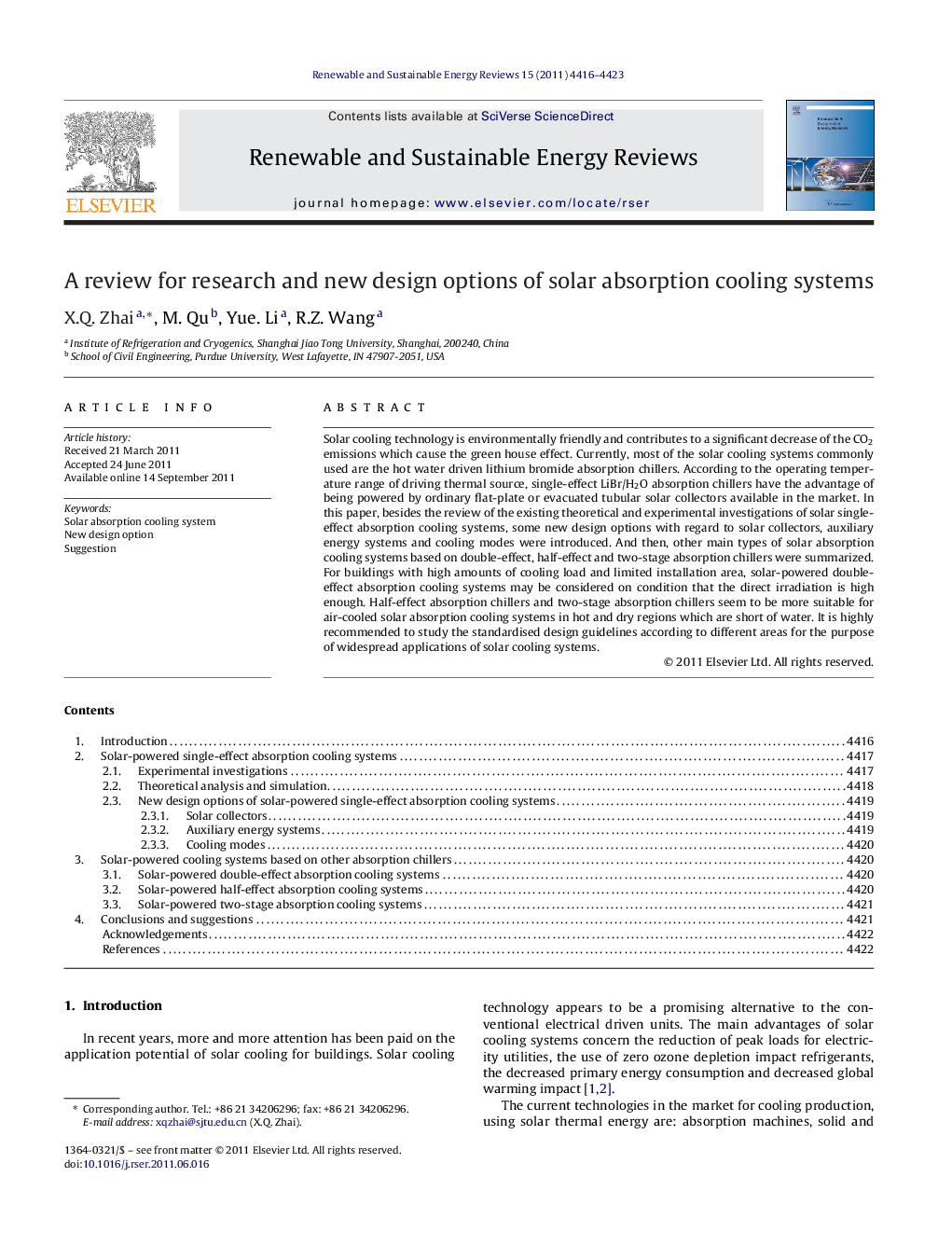| Article ID | Journal | Published Year | Pages | File Type |
|---|---|---|---|---|
| 10689955 | Renewable and Sustainable Energy Reviews | 2011 | 8 Pages |
Abstract
Solar cooling technology is environmentally friendly and contributes to a significant decrease of the CO2 emissions which cause the green house effect. Currently, most of the solar cooling systems commonly used are the hot water driven lithium bromide absorption chillers. According to the operating temperature range of driving thermal source, single-effect LiBr/H2O absorption chillers have the advantage of being powered by ordinary flat-plate or evacuated tubular solar collectors available in the market. In this paper, besides the review of the existing theoretical and experimental investigations of solar single-effect absorption cooling systems, some new design options with regard to solar collectors, auxiliary energy systems and cooling modes were introduced. And then, other main types of solar absorption cooling systems based on double-effect, half-effect and two-stage absorption chillers were summarized. For buildings with high amounts of cooling load and limited installation area, solar-powered double-effect absorption cooling systems may be considered on condition that the direct irradiation is high enough. Half-effect absorption chillers and two-stage absorption chillers seem to be more suitable for air-cooled solar absorption cooling systems in hot and dry regions which are short of water. It is highly recommended to study the standardised design guidelines according to different areas for the purpose of widespread applications of solar cooling systems.
Keywords
Related Topics
Physical Sciences and Engineering
Energy
Renewable Energy, Sustainability and the Environment
Authors
X.Q. Zhai, M. Qu, Yue. Li, R.Z. Wang,
